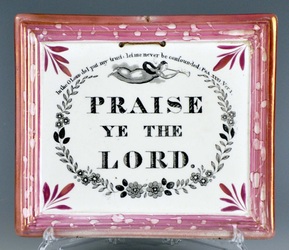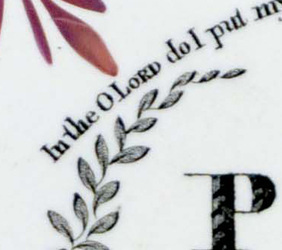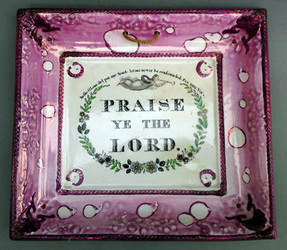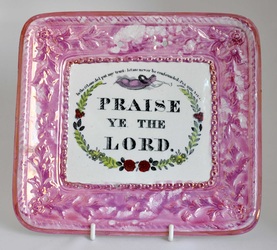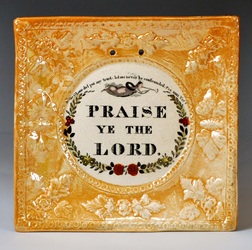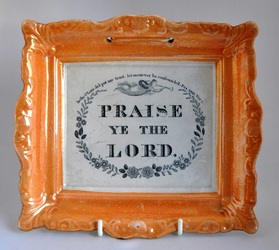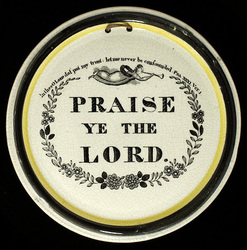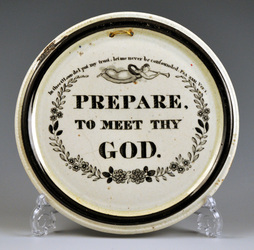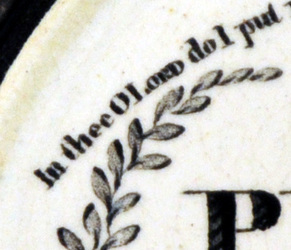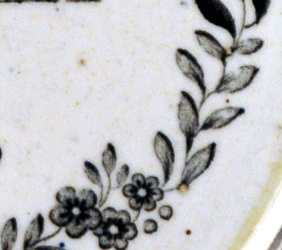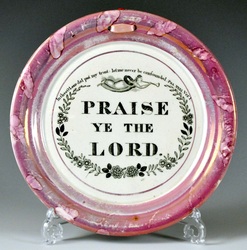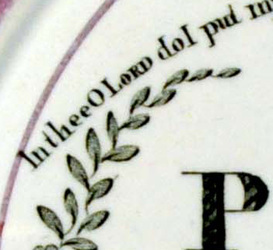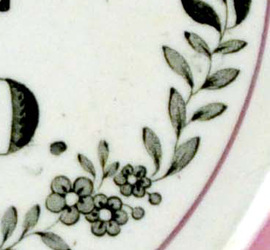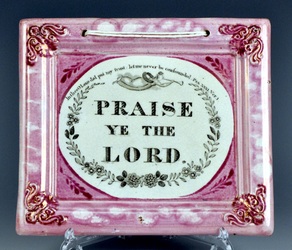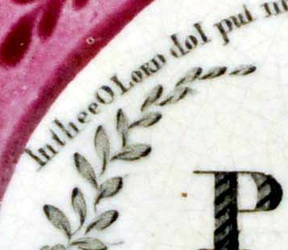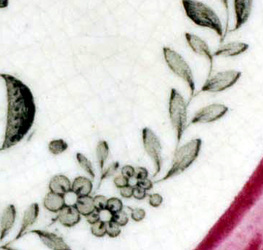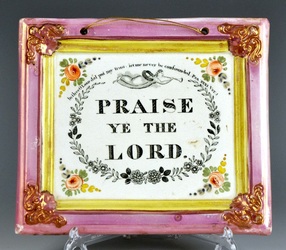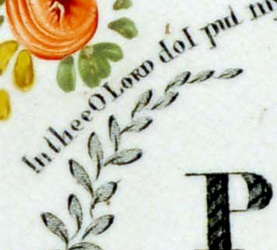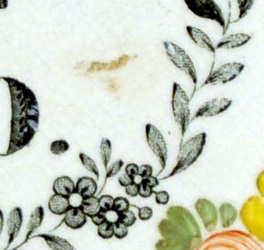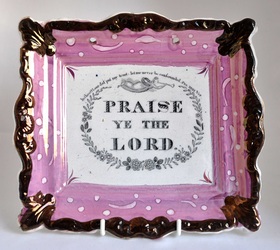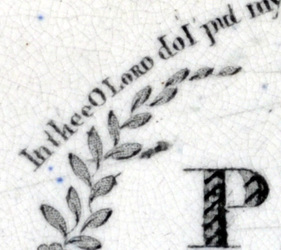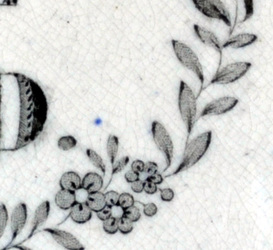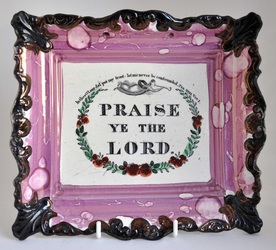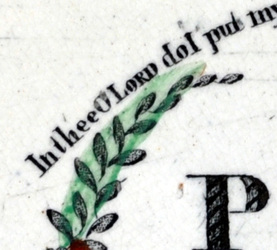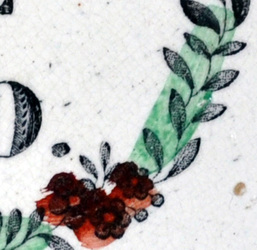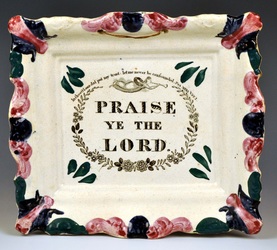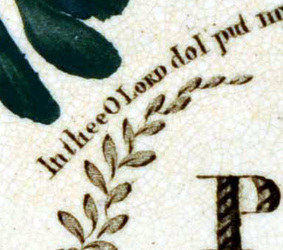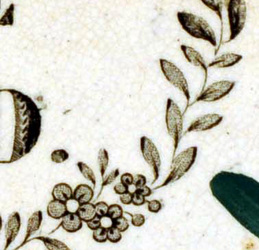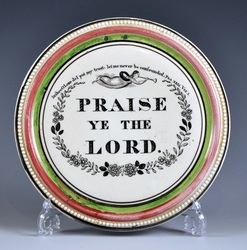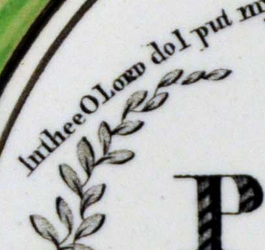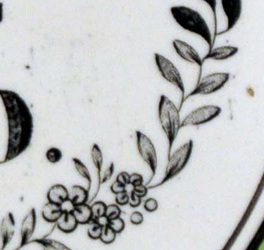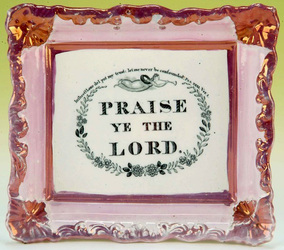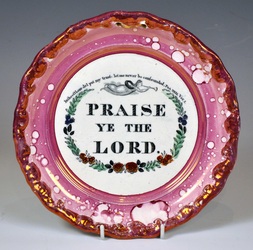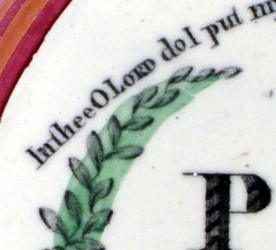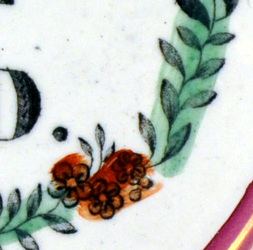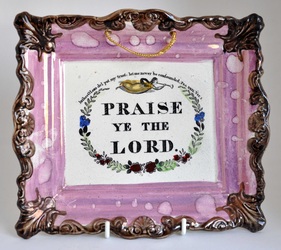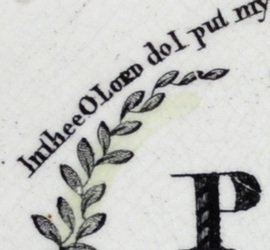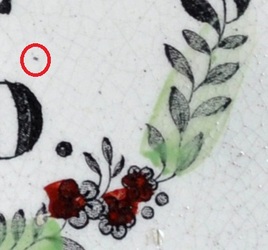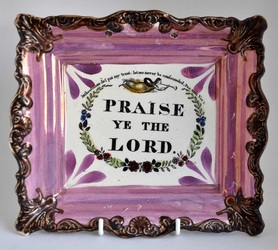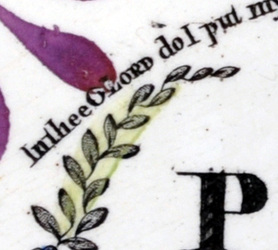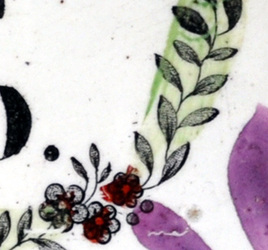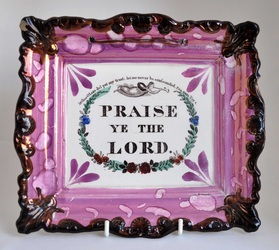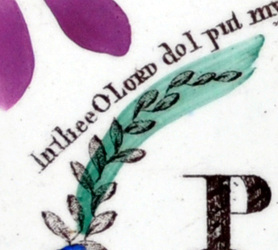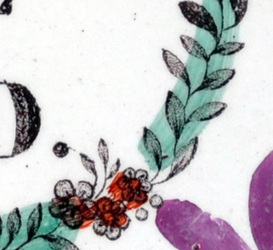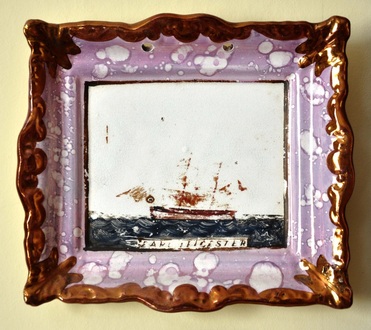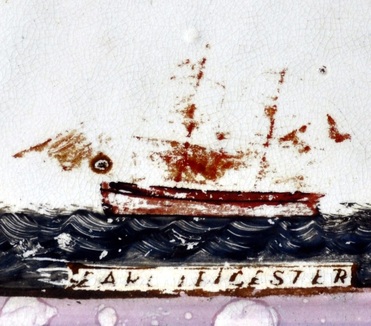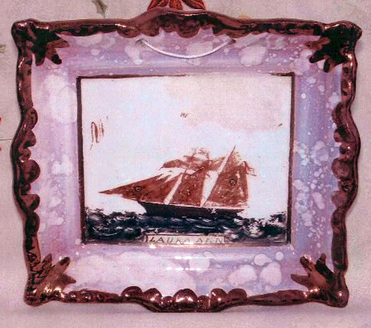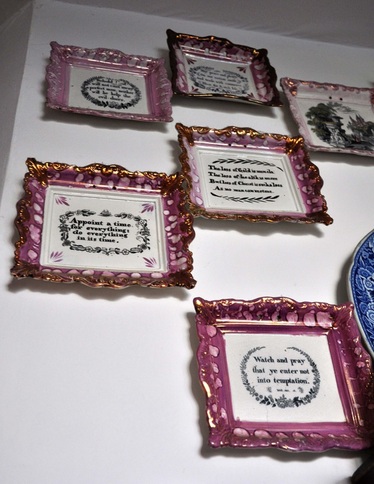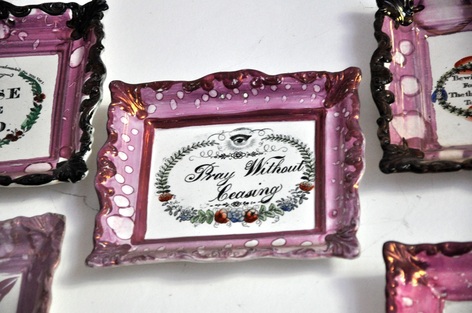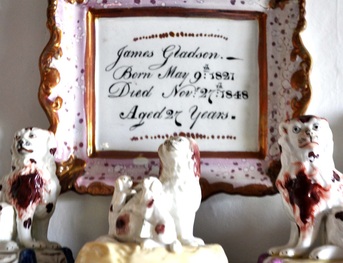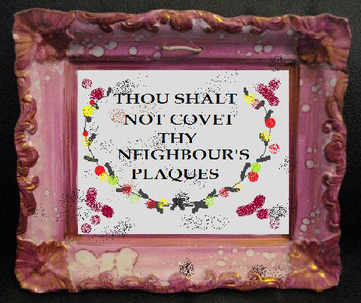|
10/30/2011 0 Comments Praise ye the lordI now have a new pair of reading glasses, so feel strong enough to look at the common variations of 'Praise ye' plaques. If you feel overwhelmed by the details of this blog post, you can find a summary of the information on the new Praise ye the lord page. When I looked at the Scott and Moore 'Prepare' plaques in detail, I identified four different transfer plates with miniscule variations. I categorised them as Sunderland plate 1, Sunderland plate 2, Sunderland plate 3 and Sunderland plate 4. However, when I repeated the exercise for the 'Thou god' plaques, I could only find three variations to pair with the Prepares. There was no obvious pair for Sunderland plate 2. Interestingly, the tiny variations between the Prepare transfer plates carried over into the corresponding Thou transfer plates. So if a leaf was more heavily shaded on one side on the Sunderland plate 3 Prepare, it was shaded in exactly the same way on the Sunderland plate 3 Thou god. If the small circles beside the flowers were joined to the wreath by stalks on the Prepare, they were also joined by stalks on the Thou god. So what about the Praise ye plaques? The pair to Sunderland plate 1 is very easy to identify. The forms on which the transfer appears are distinctive, and I've found no evidence that any of the other transfer plates (2–4) were used on them. They also have a mistake in the surmounting verse, which reads 'In the O Lord...' I've posted some examples below. N.B. the first four plaques are attributed to Scott (see here). The fifth plaque may have been made by Ball's Deptford Pottery after Scott's closure in 1896. As with the Thou god plaques, I've found no evidence of a Sunderland plate 2 to pair with the Prepare. The first plaque below was presented to the V&A by descendants of the owners of the Newbottle 'High' Pottery. Click here to read more about the attribution. I've labelled the corresponding Prepare and Thou as Sunderland plate 3. These transfer plates, likely used at Newbottle in the 1830s and early 40s, appear to have been acquired by Scott sometime c1845. But the details of the Sunderland plate 3 Praise ye plaque don't follow the same pattern as those on the Prepare and the Thou god. Look at the photos below. On the Praise ye, the leaves under the word 'thee' (first detail) are more heavily shaded on the left side. Whereas on the Prepare, they are more heavily shaded on the right. The circles to the right of the flowers (second detail) on the Praise ye plaque are joined to the sprig by stalks. Whereas on the Prepare, there are no stalks. The leaves on the top of the sprig, to the right of the flowers (second detail) are more heavily shaded on the left on the Praise ye plaque. But they are more heavily shaded on the right on the Prepare. Below are some Scott-attributed plaques for comparisson, which all share the same transfer plate as the Newbottle Praise ye, i.e. Sunderland plate 3. The first four plaques are of forms produced c1845–50. The fifth is a typical brown-edged plaque, attributed to Scott, c1850s onwards. The last plaque has unusual colouring to the corners and border. The plaques below all come from Sunderland plate 4. The first is a fine early example attributed to Moore & Co, c1830s–40s. The second has the impressed mark Moore & Co, c1850. The third is attributed to Moore & Co from around the same date. Note that, unlike the plaques above, the leaves under the letter 'O' in 'O Lord' are shaded on the right side. The circles to the right of the flower aren't joined to the leaves by stalks. The following Scott-attributed Praise ye plaques with brown edges, all also come from Sunderland plate 4. There is a tiny flaw on the transfer plate above the letter D in the second detail, which reproduces on both the Scott and Moore versions. So in this case, Sunderland plate 4 looks to have passed from Moore to their neighbour Scott, sometime around the early 1850s. However, we know that a good relationship existed between the two potteries and that they often shared transfer plates. If you've read this far, thank you. It may take me a year or two to get around to looking at the other common Sunderland verse transfers.
0 Comments
10/25/2011 0 Comments End of the Carr and Patton partnershipHuge thanks again to Keith Bell for providing another piece in the jigsaw of the Carr and Patton partnership. The announcement below is from the London Gazette, 1846. NOTICE is hereby given, that the Partnership existing
between John Carr, of North Shields, in the county of Northumberland, Earthenware Manufacturer, and John Patton, of the borough and county of Newcastle-upon-Tyne, Earthenware Manufacturer, as Earthenware Manufacturers, at North Shields aforesaid, and at the Phoenix Pottery, Ousebum, in Newcastle-upon-Tyne aforesaid, has been this day mutually dissolved.—Dated the 31st day of December 1846. John Carr. John Patton. London Gazette The information that Keith has provided is important enough to merit its own page. Click here to see the new page on North Shields Pottery partnerships. 10/15/2011 0 Comments Hand-painted shipsThe sharp eyed amongst you will already have spotted the hand-painted plaque below on the Rare ships page. It's from the same private collection I blogged about last week. The plaque, which appears to be made by Dixon, was fired blank for later decoration. It's unclear whether the pottery painted the ship, which looks naively rendered, or whether that was done somewhere else after sale. Anyhow, time hasn't been kind to the over-glaze enamels, and only a palimpsest of sails and masts remains. The ship appears to be called 'Earl Leicester', which might relate to the Elizabethan nobleman, Robert Dudley, who had a ship called the 'Galleon Leicester'. The plaque came up on eBay five or six years ago, with another titled 'Laura Ann'. After a bidding war, the two plaques were separated. All I have is a dog-eared computer print-out of the other one, which has more sails intact. If you are the owner of this plaque, you're a lucky person. I'd love a better photo. Then at least on the internet, Laura Ann and Earl Leicester could hang side by side once more.
10/9/2011 0 Comments Hand-painted plaquesOne of the great things about plaque collecting is that even after 10 years of obsessive searching, there are many plaques out there to be discovered and recorded. The fact that some have hand-painted texts means that it is nigh-on impossible to produce a catalogue raisonné, including every variation. Recently I had the huge pleasure of visiting a private collection, with many such plaques. It had been mostly assembled before the days of the internet, when it was possible to attend a small auction and bid unchallenged on magnificent items. (Or at least, that is how I choose to imagine it, as it belongs firmly to the era before I started collecting.) Many of the plaques were hung high up, so these are the best photos I could manage. I have added more plaques to the Plaques with hand-painted text page and Poetic verses page, amongst others. Huge thanks to the owners of the collection for their hospitality. Seeing such a selection of rarities summons up mixed emotions – excitement, respect, a sense of lost time, and, rather less appealingly, envy. I'll give the last word on this post to Ian Holmes, who, sensing the latter in my outpouring of praise for the collection, sent me the following picture.
|
AuthorStephen Smith lives in London, and is always happy to hear from other collectors. If you have an interesting collection of plaques, and are based in the UK, he will photograph them for you. Free advice given regarding selling and dispersal of a collection, or to those wishing to start one. Just get in touch... Archives
February 2022
AcknowledgementsThis website is indebted to collectors, dealers and enthusiasts who have shared their knowledge or photos. In particular: Ian Holmes, Stephen Duckworth, Dick Henrywood, Norman Lowe, Keith Lovell, Donald H Ryan, Harold Crowder, Jack and Joyce Cockerill, Myrna Schkolne, Elinor Penna, Ian Sharp, Shauna Gregg at the Sunderland Museum, Keith Bell, Martyn Edgell, and Liz Denton.
|
